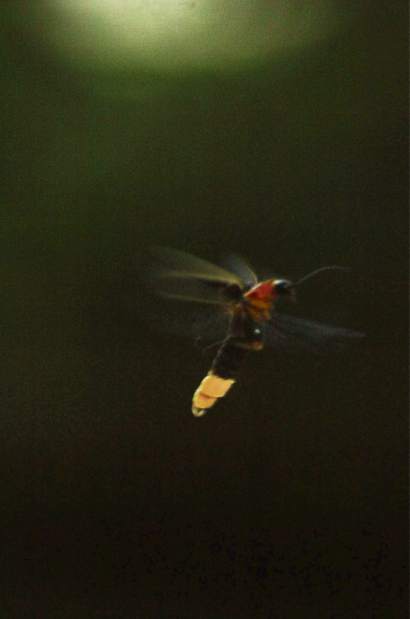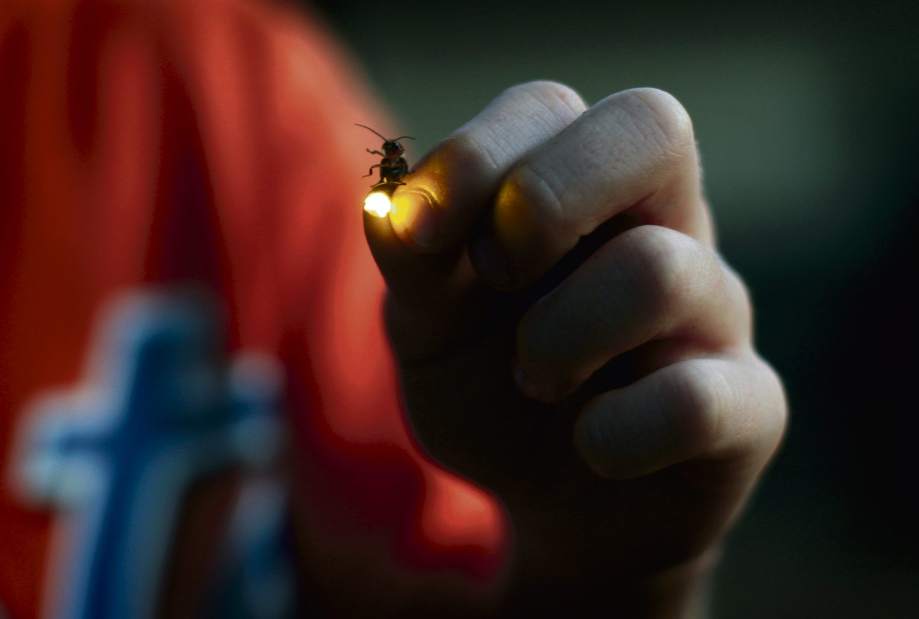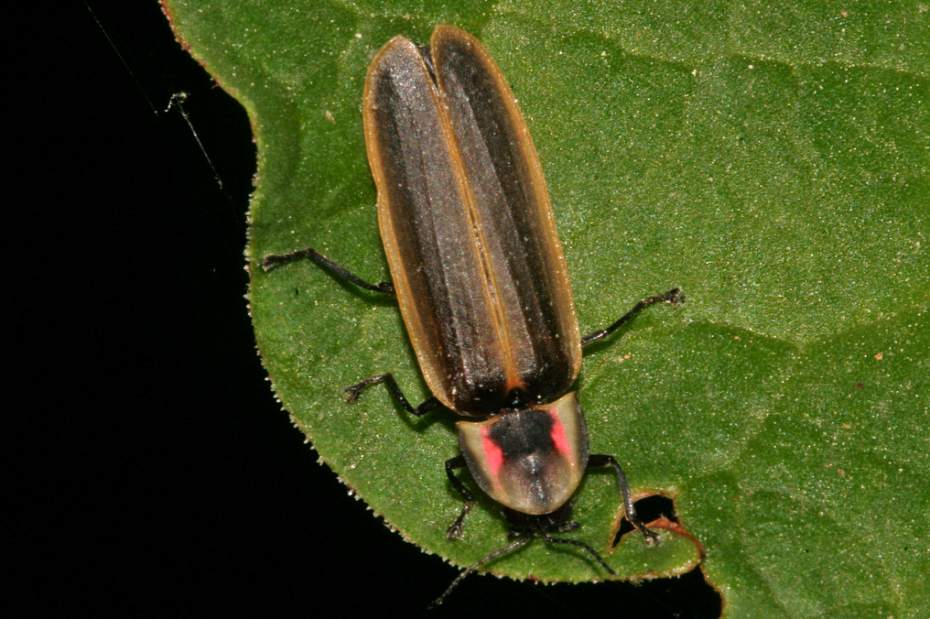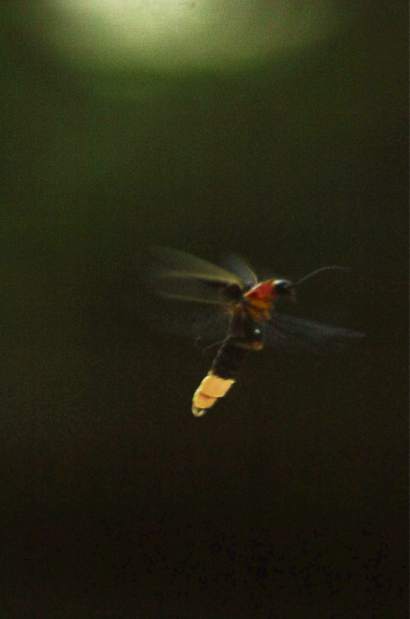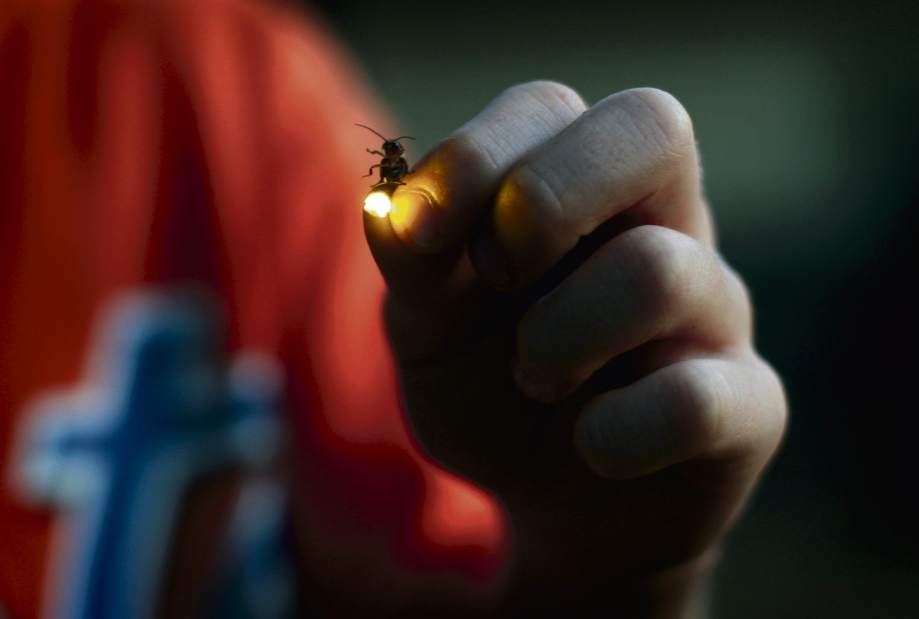Catch the facts about fireflies, er, lightning bugs
They are a rite of summer.
Fireflies, lightning bugs — whatever you call them — you recognize them from their bright lights that illuminates in the darkness, especially on hot and humid summer evenings.
"Usually you see them in the warm weather … mid-June to mid-July and sometimes into August," says Scott Detwiler, environmental educator for the Audubon Society of Western Pennsylvania.
On a recent evening, Detwiler was at Beechwood Farms Nature Reserve, where his office is, for one of the summer's Firefly Watch nights, where the public is invited to help with data collection.
Where have all the fireflies gone?
The number of fireflies is declining, Detwiler says.
Luciferase, which is responsible for the characteristic yellow light emission from many firefly species, has proven to be useful in scientific research, food safety testing and forensic tests. When luciferase was first discovered, the only way to obtain the chemical was from fireflies themselves. Today, synthetic luciferase is available, but some companies still harvest fireflies.
Other factors that may be contributing to firefly decline include light pollution and habitat destruction — if a field where fireflies live is paved over, the fireflies don't migrate to another field, they just disappear forever.
They range the world over
Just like a #fairyland! Linggu #temple attracts visitors for #fireflies during the summer night. #China #travel pic.twitter.com/E9x0pEtH8l
" ChinaBuzz (@MoreChinaBuzz) July 9, 2017
There are 150 to 200 species of fireflies in North America, but there are more than 2,000 worldwide, Hughes says. In Pennsylvania, there are more than two dozen species.
Not all fireflies have a fire
Only some firefly species produce adults that glow. Fireflies in the Western U.S., for example, lack the ability to produce light. Males that do glow use their flash to attract females.
Efficient energy producers
Twinkle Twinkle
Wanderlust - Day 30#MilkyWay and #Fireflies in rural #Iowa pic.twitter.com/7TkrG0WNa5" christopher sherman (@photosherman) July 17, 2017
The light of a firefly is the most efficient light in the world. Nearly 100 percent of the energy in the chemical reaction is emitted as light.
They can blink simultaneously
Synchronous fireflies (Photinus carolinus) are the only species in America that can synchronize their flashing light patterns. They can be found in the southern Appalachian Mountains, particularly in the Great Smoky Mountains National Park in Tennessee. The synchronized display occurs for a couple of weeks every year in late May or early June in the Elkmont area of the park. Details: nps.gov/grsm/learn/nature/fireflies.htm
Each species is unique

Look for the patterns and colors the insects flash to determine the species. There are three main colors — yellow green, green and amber. They flash in a "Morse code" sort of way. Each species understands its own code.
The firefly that flashes in a "J' shape is called the Photinus pyralis, a common Eastern firefly. Some will flash two dashes and a space. Some will flash in a dot, dot, dot pattern.
Some are even carnivores
Larvae are carnivorous and particularly enjoy snails. Adult fireflies usually live off of nectar and pollen, but some don't feed at all. A few firefly species also are carnivorous as adults. They don't eat snails, though — they eat fireflies of other genera.
I've been wanting to take this picture for a long time. #Fireflies
Raccoon Creek SP; Beaver County, PA.
Exposure 50", ISO 100, cropped pic.twitter.com/sO13zpcaCN
" Gʀᴀᴄɪᴇ Jᴀɴᴇ (@drquuxum) July 9, 2017
JoAnne Klimovich Harrop is a Tribune-Review staff writer. Reach her at 724-853-5062 or jharrop@tribweb.com or via Twitter @Jharrop_Trib.


